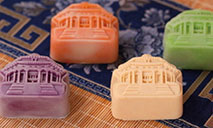80 years on, hideous Japanese germ warfare should never be forgotten
HANGZHOU, Sept. 17 (Xinhua) -- November 1940 was cruel to Hu Xianzhong -- his brother, sister and parents all died of pestis within 10 days. When faced with three black coffins on the road 81 years ago, a young Hu Xianzhong said he had no idea which coffin held his father. The 89-year-old man was only a second-grade primary school student at the time.
The culprit of the tragedy was germ warfare orchestrated by Japan's infamous Unit 731.
"In 1940, 1942 and 1944, the Japanese army carried out large-scale germ warfare in east China's Zhejiang Province," said Bao Xiaofeng, a history researcher in Zhejiang.
Zhejiang was one of the hardest-hit areas of Japanese germ warfare, which directly caused about 60,000 deaths in the province, according to Bao.
"JAPANESE-MADE" PLAGUES
On the afternoon of Oct. 27, 1940, a Japanese plane airdropped wheat grains, millet, flour, cotton and fleas over Kaiming Street in the city of Ningbo, Zhejiang.
"The plane flew low enough that I could clearly see Japan's rising sun flag on it," said Hu. "It rained that day, and all the stuff dropped on the roof rushed into the water tanks where we received the rain as domestic water."
A few days later, the owner of a soybean milk shop next to Hu's family died of a sudden illness, and then Hu's sister got a fever. "The local hospital treated her for malaria but on the third day, her whole body was inflamed, with her skin turning red and lymph nodes swollen," Hu said. "She didn't survive the night."
Then came his brother, father, mother and other people he knew. Incomplete data shows 135 local deaths were recorded due to the "Japanese-made" plague epidemic in Ningbo.
Hu often took out a photo, touching it softly and emotionally, in which his father stood in the middle of his sister and mother. "My little brother was so young that I didn't have a picture of him. We can't even reunite through a photo," Hu said.
Zhejiang's Chongshan Village was another tranquil place that the Japanese army turned into a living hell during the war. On Sept. 3, 1942, the army dropped bombs in the village, with a plague then breaking out on Oct. 12. About a month later, Japanese soldiers came to the village, digging up dead bodies from the epidemic to take samples. On Nov. 11, 1942, they concentrated the patients in a temple nearby for brutal vivisection using the excuse of "treatment."
Local resident Wang Jianzheng said his great-grandmother and uncle died of the plague. "The midwife who delivered me survived the 'concentration temple' -- she escaped from a cesspit."
LEARN AND GROW FROM THE PAST
In 1997, the victims in Zhejiang, Hunan and other provinces formed a plaintiff group of the germ atrocities, demanding Japan apologize and compensate for the damage they had caused. The Japanese Supreme Court upheld the determination of historical facts of bacterial warfare 10 years later but still rejected the claim for compensation.
In the Zhejiang Archives, there are 79 volumes, about 7,000 pages of files, depicting in detail how the Japanese forces used aircraft and spies to spread poisons and the government's investigation of the germ warfare, as well as other proof, constituting a complete and powerful chain of evidence.
"The crimes by the Japanese army are irrefutable," said Zhou Donghua, dean of the History Department of Hangzhou Normal University.
In cities of Ningbo, Yiwu and Quzhou where the Japanese conducted military strikes with pathogens that triggered recurring plague epidemics, memorial facilities for one of the most gruesome biological warfare attacks have been built.
An exhibition museum for germ warfare has been opened to the public in Chongshan Village. In addition to being the curator, Wu Jianping also provides volunteer services for the elderly suffering from what locals term "rotten leg disease" caused by the germ weapons.
Wu Fagui's left calf and foot, with suppurating wounds that began to fester at around four years old, make it impossible for the 83-year-old farmer to walk normally. His father also suffered from the same affliction. "One wound in the left leg, another in the left foot, and a line in the middle. Sometimes, blood comes out of the ulcers," said Wu Xiaorong, son of Wu Fagui.
In 2015, a public fundraising campaign led by researcher Wang Xuan from Shanghai Jiao Tong University and Wang Zhengguo, an academician of the Chinese Academy of Engineering, was launched to help "patients with rotten feet." The civil affairs bureau of Quzhou City also raised funds to provide outpatient services for those in need.
"The surgical treatment was launched on Sept. 18 in 2015," said Ye Chunjiang, deputy director of the department of wound repair of the Quhua Hospital, adding that the hospital has treated a total of 87 patients, all of whom had skin grafting except seven who were physically unable to undergo surgery.
"It's very gratifying to see the wounds on the old people's legs heal, and many people can finally put on clean shoes and socks," Ye said, adding that their efforts are also helping keep the lessons of history alive.
Photos
 Bumper harvest presents a magnificent scene of terraced rice paddies in SW China's Luzhou city
Bumper harvest presents a magnificent scene of terraced rice paddies in SW China's Luzhou city In pics: life of Siberian tigers in NE China's breeding center
In pics: life of Siberian tigers in NE China's breeding center Explore wonderland created by an alpine lake cluster in SW China's Yunnan
Explore wonderland created by an alpine lake cluster in SW China's Yunnan In pics: Museums across China unveil creative and culturally-inspired mooncakes
In pics: Museums across China unveil creative and culturally-inspired mooncakes
Related Stories
- Chinese remember Sep 18 Incident amid Japan’s ruling LDP turning election into anti-China contest
- U.S. veterans reflect, repent 20 years of "war on terror"
- China urges Japan to reflect on its aggression history
- Tracing origins of America's war addiction
- Commentary: "Forever war" may have ended, but not America's infighting
Copyright © 2021 People's Daily Online. All Rights Reserved.






